If you have grevilleas in your yard or garden you might be led to wonder what to plant under them. Look no further! We have researched all about what to plant under grevilleas and why.
What you should plant under grevilleas are plants that need similar care. The best ones to plant under or near grevilleas are other drought-tolerant plants that require full sun. A few examples of this are lavender, rosemary, thyme, and oregano.
There is much more helpful information ahead regarding grevilleas. Continue reading to learn more about which plants you should or should not plant near a foundation, whether or not shrub roots can damage a foundation, which fertilizer is best for grevilleas, how to make them bushy, and more.
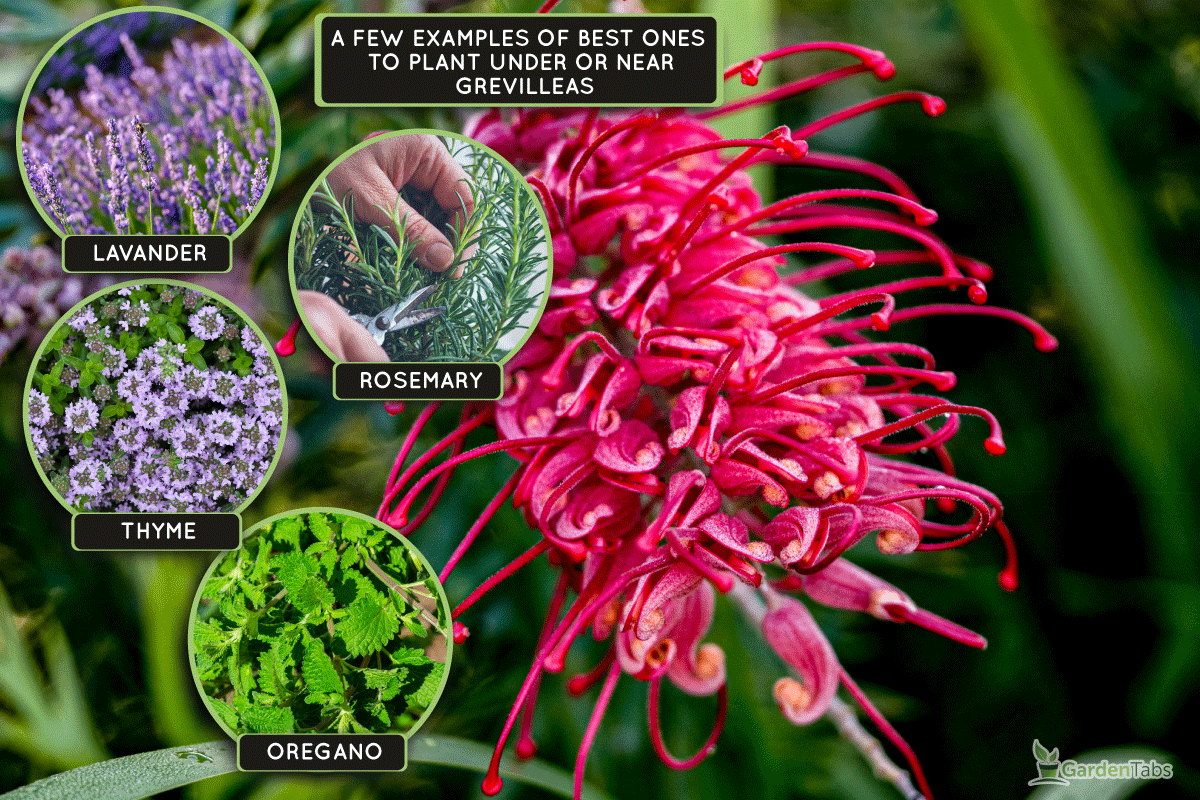
What To Know About Grevilleas
Grevilleas are also known as spider flower. They are in the Proteaceae family. These are shrubs and evergreen trees that are commonly thought of as native to Australia, but they are native to Tasmania and New Caledonia as well and are becoming more and more popular in North America.
On average, grevilleas grow to be somewhere between 50 and 80 feet tall and some are 100 feet tall!
One awesome thing about grevilleas is that they are fairly low maintenance. Healthy grevilleas grow quickly and spread.
After they have grown enough to be considered to be established, they do not need much watering or upkeep. It is fine and necessary to prune them a bit here and there. Doing so will allow you to choose the size that is right for your yard.
When it comes to what to plant under and around grevilleas, you need to choose plants that require similar soil and climate conditions.
One thing to remember about grevilleas is that they are drought tolerant, so you need to choose other plants that are drought tolerant too. This means plants that do not a whole lot of water and upkeep.
If you think about it, switch grass or ornamental grasses are a fantastic choice to plant under grevilleas. This gives the area below your grevilleas some color and makes for a pleasing aesthetic. Ornamental grasses are low maintenance, drought tolerant, and fairly easy to maintain.
Some great choices for what you can plant under grevilleas are plants that also thrive in full sun. Rosemary and lavender are two great examples. Some other options are leucospermums (pincushions), leucadendrons (conebushes), thyme, oregano, and nepeta, or cat mints.
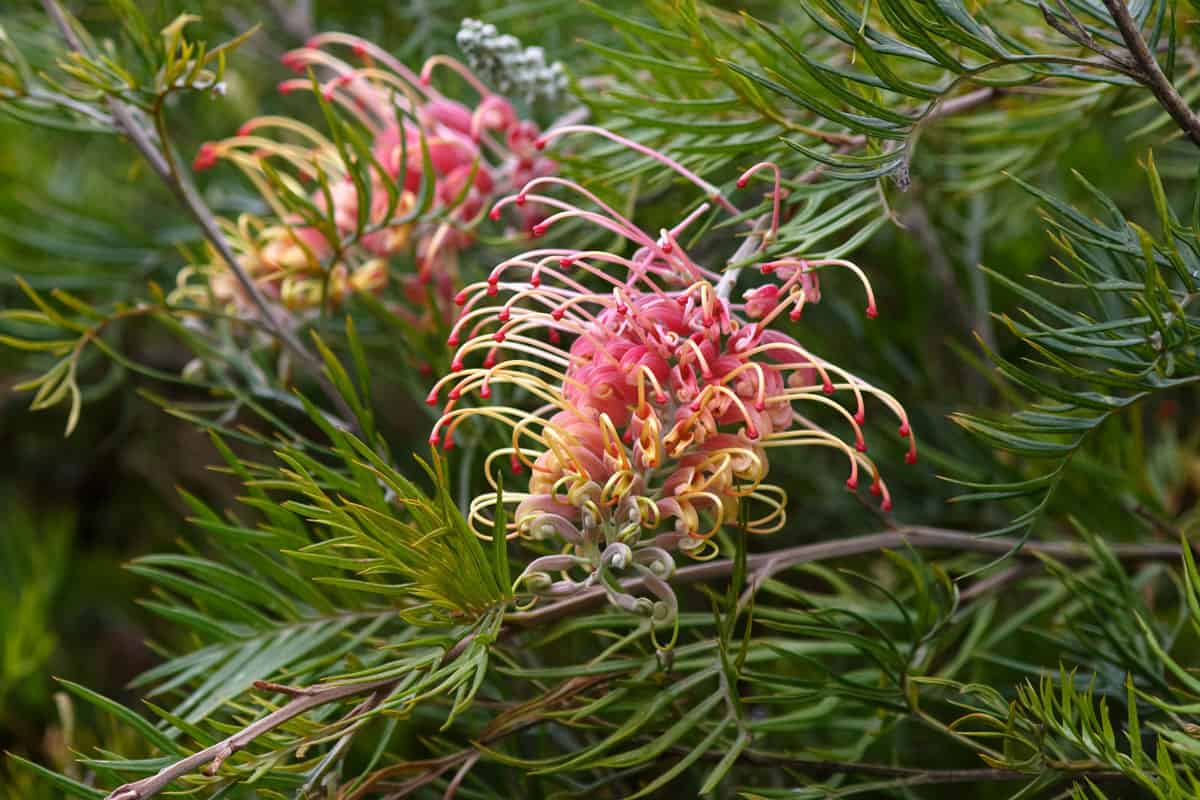
Can Shrub Roots Damage Foundation?
Yes, shrub roots will probably end up damaging your foundation. They should be planted several feet from your home or the foundation of any building.
Remember to factor in the height a shrub will grow to when it is mature. Avoid planting tall shrubs in front of windows that you intend to be able to see out of and away from gutters too.
How Far Should Plants Be Away From Foundation?
The space needed between a plant and foundation differs from plant to plant. You must consider the root system of the tree or plant you intend to plant near a home or structure as well as how wide it will be when it has had time to mature.
When it comes to shrubs, they do not generally have to be as far as trees. Take into account how wide the shrub will be when it is mature, then divide that number in half and plant the shrub that many feet from your house.
For example, a shrub that will be 20 feet wide when it is mature should be planted at least 10 feet from a home or any foundation.
The problem with plants being near a foundation is that they can put pressure on the foundation which will cause it to crack and sometimes even collapse. Any branches hanging over your house or that grow wide enough to put pressure on your home have the potential to cause damage to the siding as well.
One other problem with plants being too close to the foundation is that the soil beneath them swells and contracts which also has the potential to add pressure to the foundation.
What Should You Not Plant Near A Foundation?
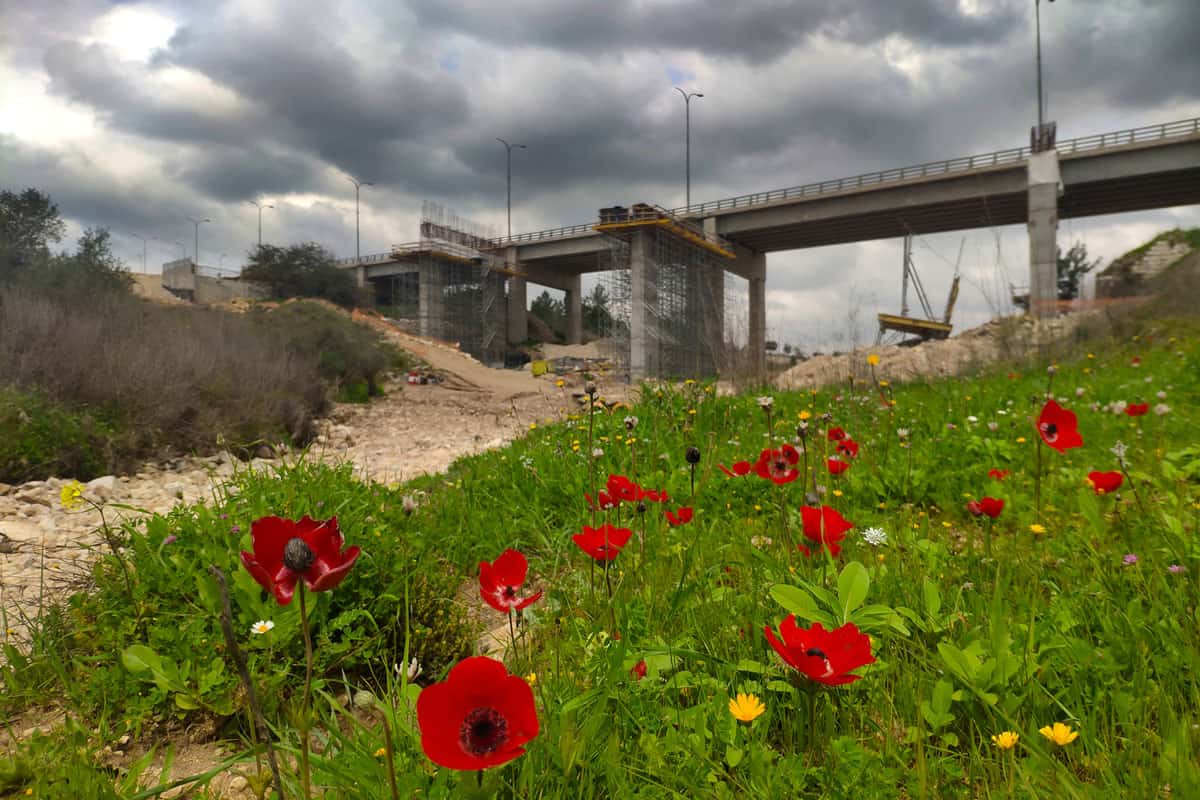
You should not plant anything with wide-spreading or large root systems near a foundation. A few examples of this are aspens, poplars, and cottonwood trees. Maple trees and American elm are other examples of trees that you should avoid planting within 20 feet of a foundation.
Large plants are not the best option when it comes to planting near a foundation either. Stick with smaller plants that are not invasive. Do your research on the individual plant and its root system before planting it near a foundation. Make sure it has enough room to grow without running into plumbing below either.
Grevilleas are not the best choice to plant near a foundation. They need plenty of space to grow and expand.
What Plants Are Safe To Plant Near A Foundation?
The easy answer is to plant switch grass or ornamental grasses near your foundation. Ground cover and small ornamental trees are a good choice for planting near a foundation. Star magnolia and dogwood are a couple of examples that are considered safe to plant near a foundation.
Stonecrops are a great choice to plant near a foundation. They stay low to the ground (10 to 12 inches tall), and they are colorful. An awesome addition, stonecrops add a pop of color wherever they are planted.
If you are going to plant shrubs near a foundation, you need to choose one that is manageable. Foundation shrubs are considered the optimal choice for this job. Upright varieties of shrubs are the best choice for what type of shrub is okay to plant near a foundation.
A great example of a safe choice to plant near a foundation is the Chinese juniper. They grow to be between 15 and 20 feet tall but only between four and six feet wide.
This is ideal because it will not overtake your space as some other shrubs would. You won't have to worry about it busting your foundation apart or damaging your water lines.
What Is The Best Fertilizer For Grevilleas?
There are several varieties of grevilleas. Some are flowering hedges, others spread and cover the ground, and there are dwarf varieties as well. Due to the fact that grevilleas are native to Australia, they do not usually require fertilizer.
If you want to use one anyway, a low-phosphorus fertilizer is preferred. Using fertilizer with high levels of phosphorus will result in the leaves becoming discolored, and it has the potential to burn the roots of the plant.

How Do You Make Grevilleas Bushy?
The trick to making grevilleas bushy is to properly prune them when the time is right. Doing this every few months will yield the best possible results.
Grevilleas that are well established have the potential to become top heavy and may need to be pruned because of it. Cutting them back leads to the best results when it comes to grevilleas flowering.
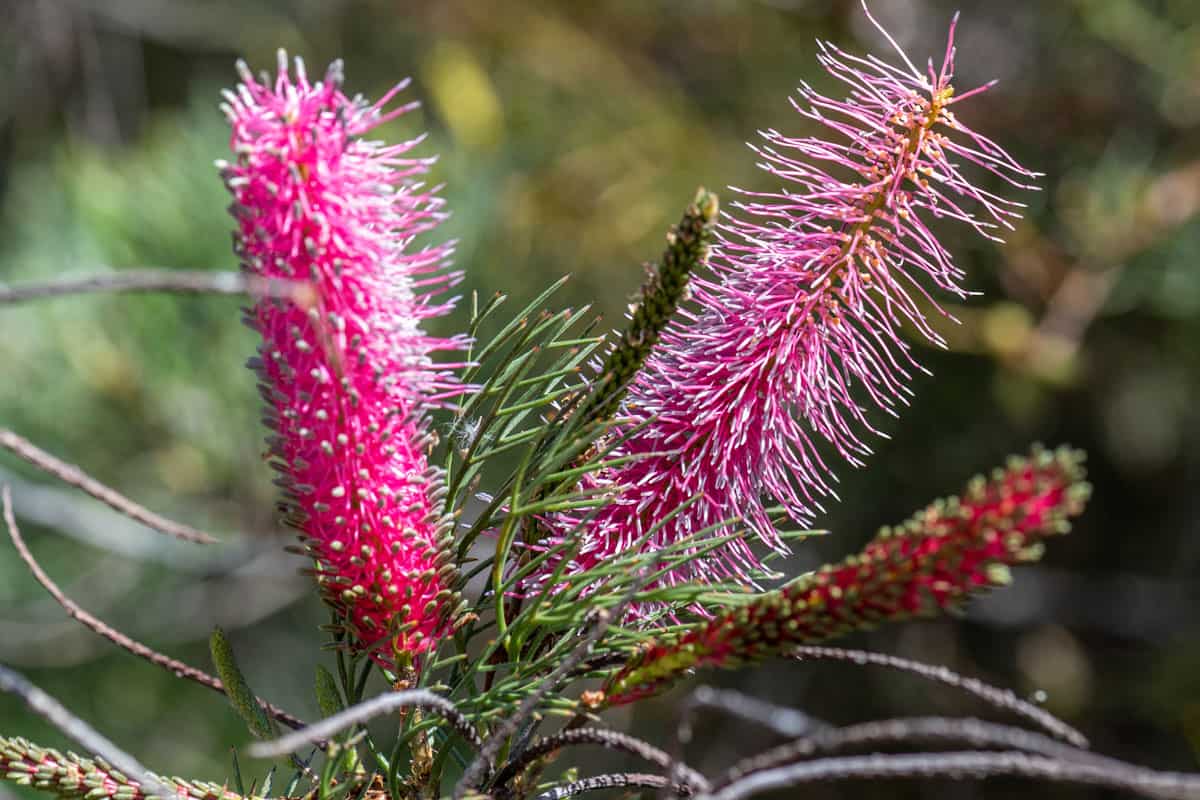
Grevilleas contain flowers of various colors such as pink, red, yellow, lilac, and orange, for example. In total, there are more than 350 species of grevilleas. Some grevilleas are ground cover while others are small shrubs. To make them bushy, you need to prune them regularly.
Click here to see these pruning shears on Amazon.
Do not cut back your grevilleas until they have had at least one growing season to become established. If you are consistent about cutting it back during the right time of year, it will become denser over time. Cut them back by one third every few months so that the grevilleas will grow to be bushy.
Some people have sensitivities to grevilleas when they are being cut down or blown in the wind. If you want to stay on the safe side, you should always wear gloves when pruning grevilleas. Doing so will make an allergic reaction to them less likely.
Click here to see these pruning gardening gloves on Amazon.
More On Pruning Grevilleas
If you are wondering what time of year is best for pruning grevilleas, spring is the answer. During the springtime, grevilleas are going through a period of active growth, therefore it is a good time to prune them because the flowers will have time to come back and bloom again. For young grevilleas, only prune the tips.
As for grevilleas that are well established, you should prune back about one third of the growth in the fall around October and another third during the winter. It is an option to propagate with the cuttings you have after pruning. This is just one way of making use of the cuttings rather than simply throwing them away.
To Wrap It Up
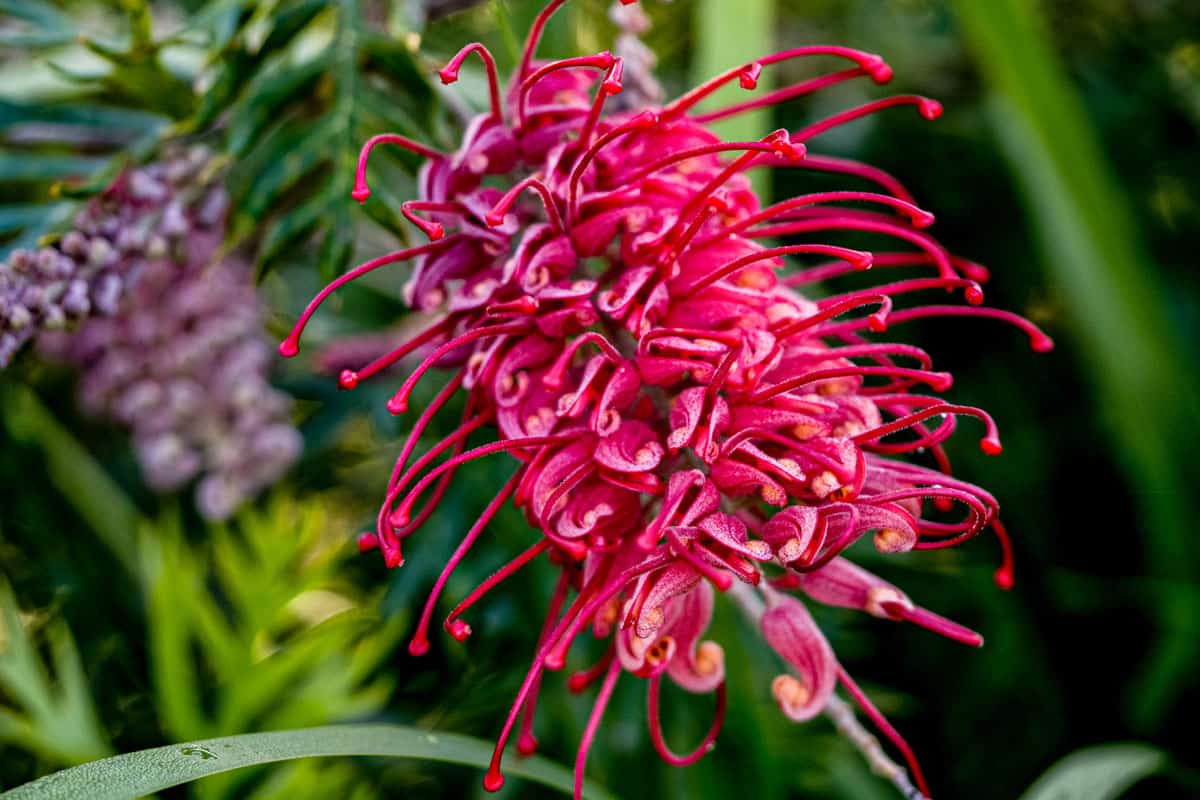
Overall, the best plants to have near grevilleas are rosemary, lavender, thyme, and other herbs. This is because herbs and grevilleas grow best in full sun. None of them are high maintenance and do not need much water in order to still be able to thrive.
Before you go, check out the following links that you might be interested in:
Can You Grow Lavender From Dried Buds?



This was really useful, I will now be planting lavender, rosemary and pincushions beneath my grevillea. Thank you.